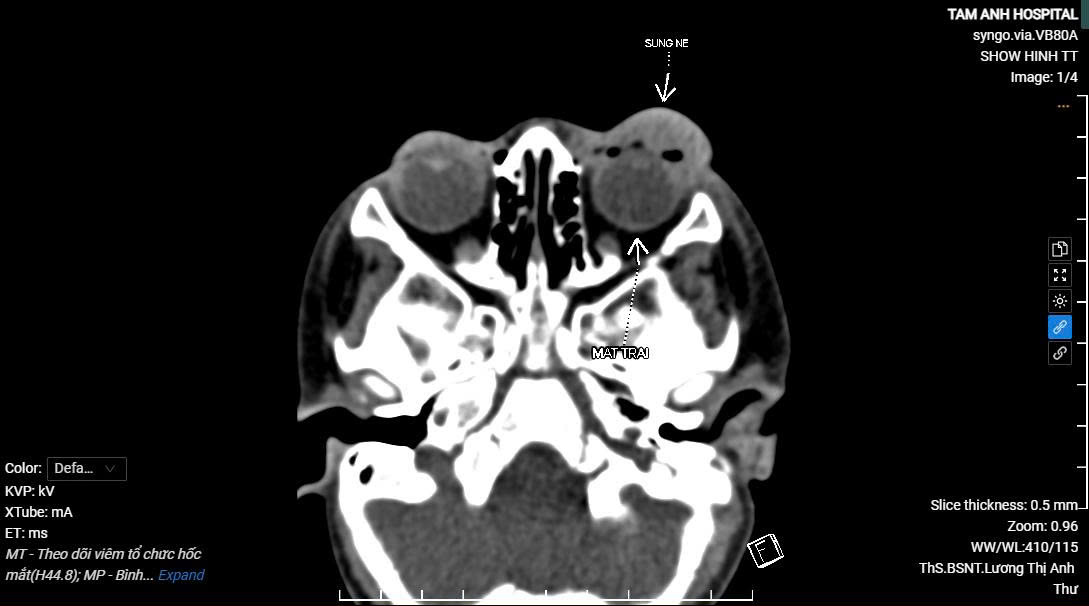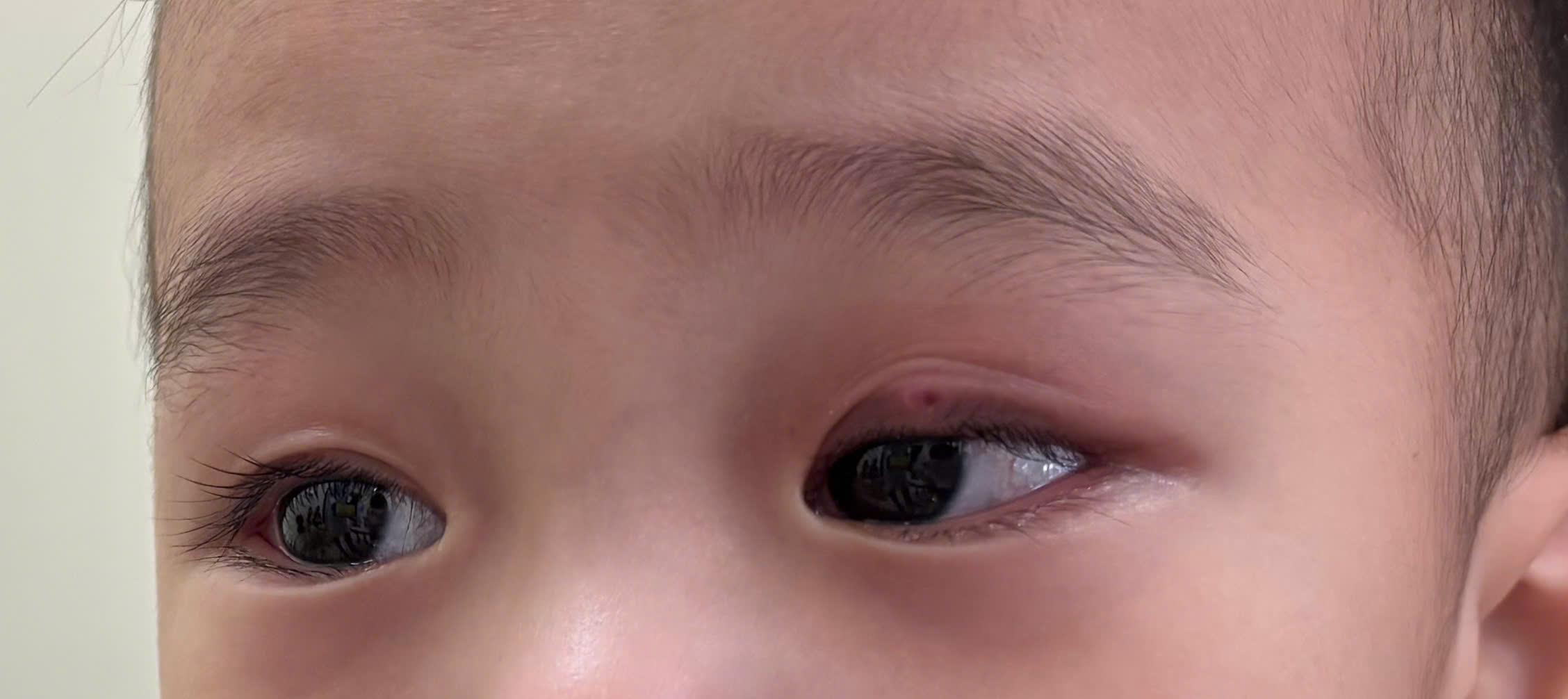Tests of the pus from the boy's eyelid revealed methicillin-resistant staphylococcus aureus (MRSA). Doctor Luong Thi Anh Thu of the High-Tech Eye Center at Tam Anh General Hospital said this bacteria can cause rapid and severe infections, potentially spreading to tissues around the eye socket and damaging the optic nerve. Due to the numerous blood vessels connecting the eye to the brain, severe cases can lead to cavernous sinus thrombosis, meningitis, and sepsis.
A CT scan of the boy assessed the extent of the infection and the risk of complications. It showed that his eyeball was symmetrical and the infection hadn't yet affected his optic nerve or deeper tissues within the eye socket. Pediatricians and ophthalmologists collaborated on his treatment, using specialized antibiotics and draining the pus. After 5 days, the swelling subsided. Two weeks later, his vision returned to normal.
 |
CT scan of the boy's eye socket. Photo: *Tam Anh General Hospital* |
Staphylococcus aureus bacteria commonly reside on skin, hair, in the respiratory tract, and on surfaces of objects. According to Dr. Thu, when the protective skin barrier is broken, such as through a scratched eyelid, eyelid inflammation, or vigorous eye rubbing, the bacteria can enter and cause infection. Children, with their still-developing immune systems and the habit of rubbing their eyes without proper hand hygiene, are particularly susceptible to this type of infection.
Signs of a staphylococcus aureus eye infection include redness, slight pain, and a small, hard lump, which can resemble a common sty or chalazion. The condition progresses quickly, with swelling spreading and potentially forming an abscess or causing inflammation of the tissues around the eye. Because the eye area is close to the sinuses and brain tissue, the infection can easily spread to the brain, causing serious complications. Some strains of staphylococcus aureus are resistant to antibiotics, making treatment challenging.
 |
Photo of the boy's eyelid after 5 days of treatment, showing reduced swelling. Photo: *Courtesy of the family* |
Many parents mistake this infection for a sty and apply warm compresses, eye drops, or herbal remedies, which can worsen the infection and delay crucial treatment. If a child experiences eyelid redness and swelling accompanied by fever, rapid spread of swelling, or pus, they should be taken to a doctor immediately.
Khue Lam
| Readers can submit questions about eye diseases here for doctors to answer. |












